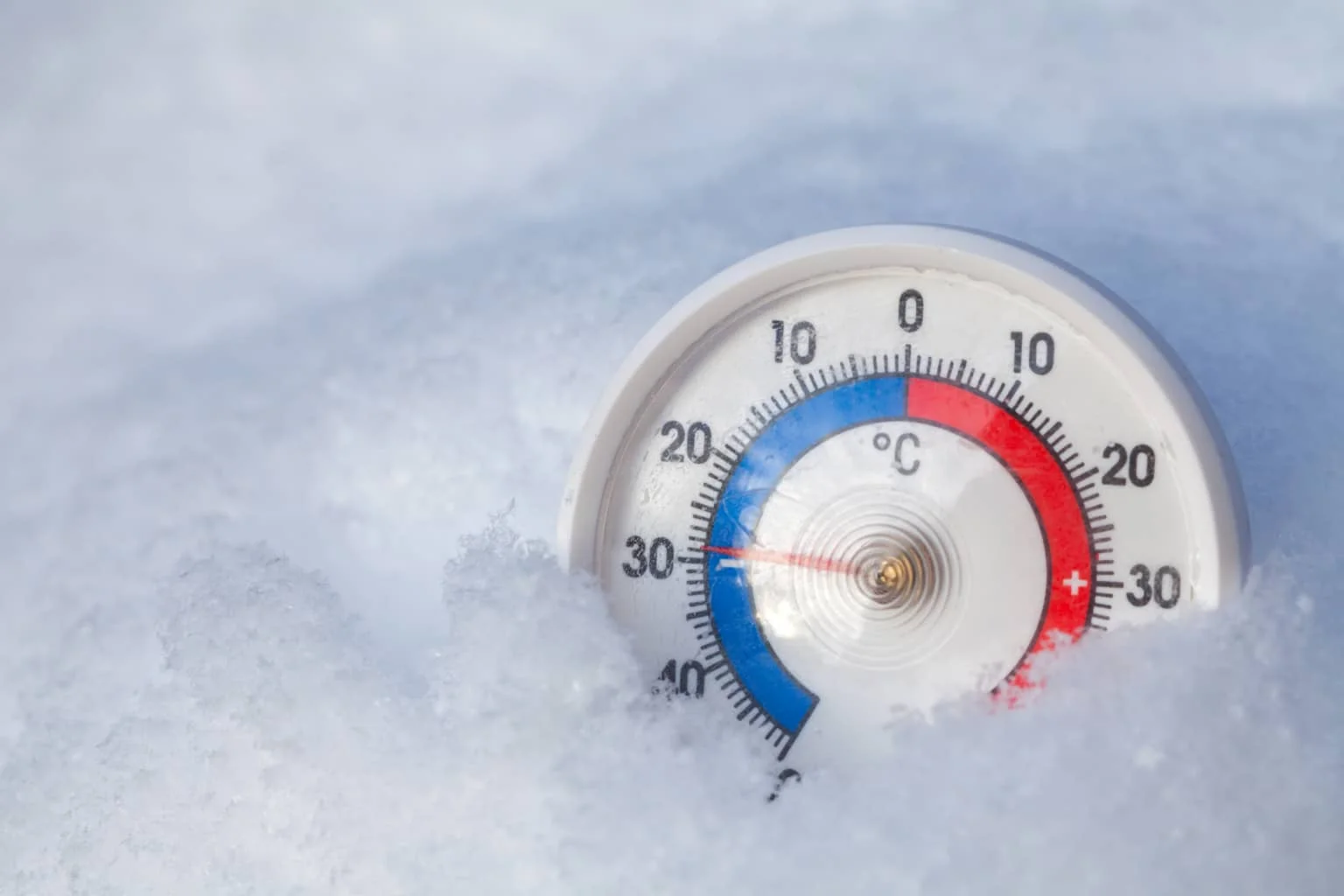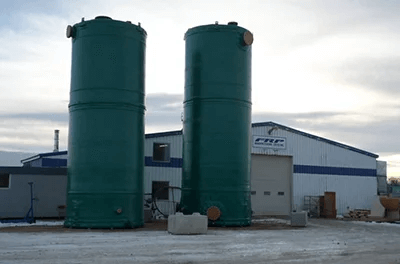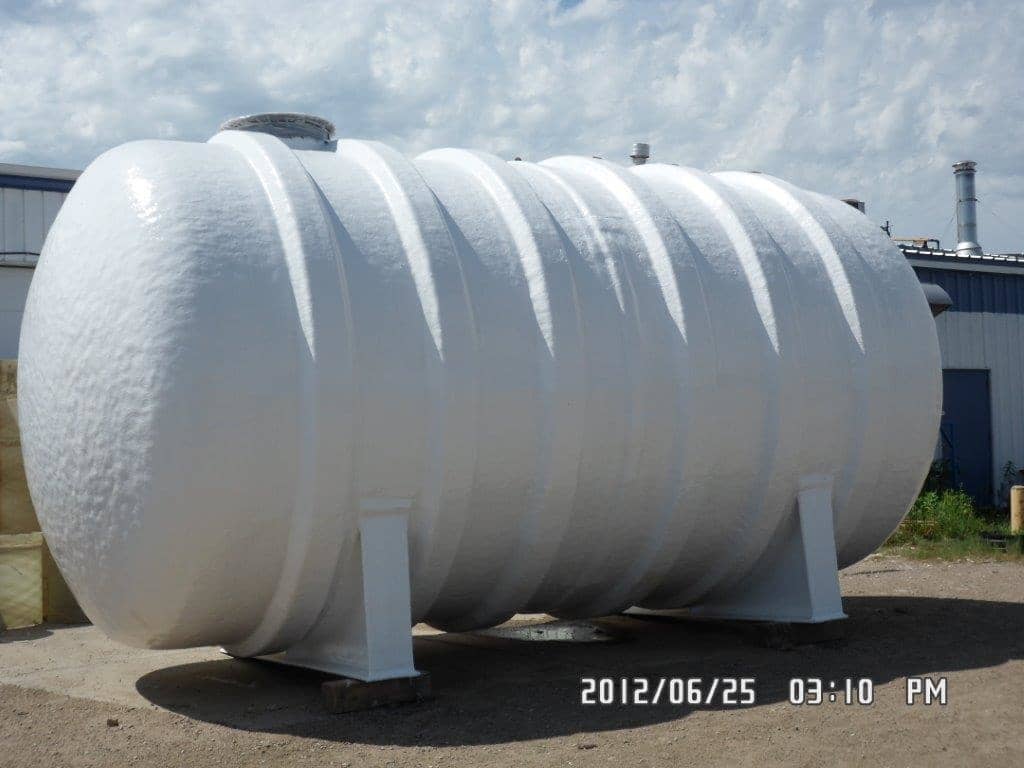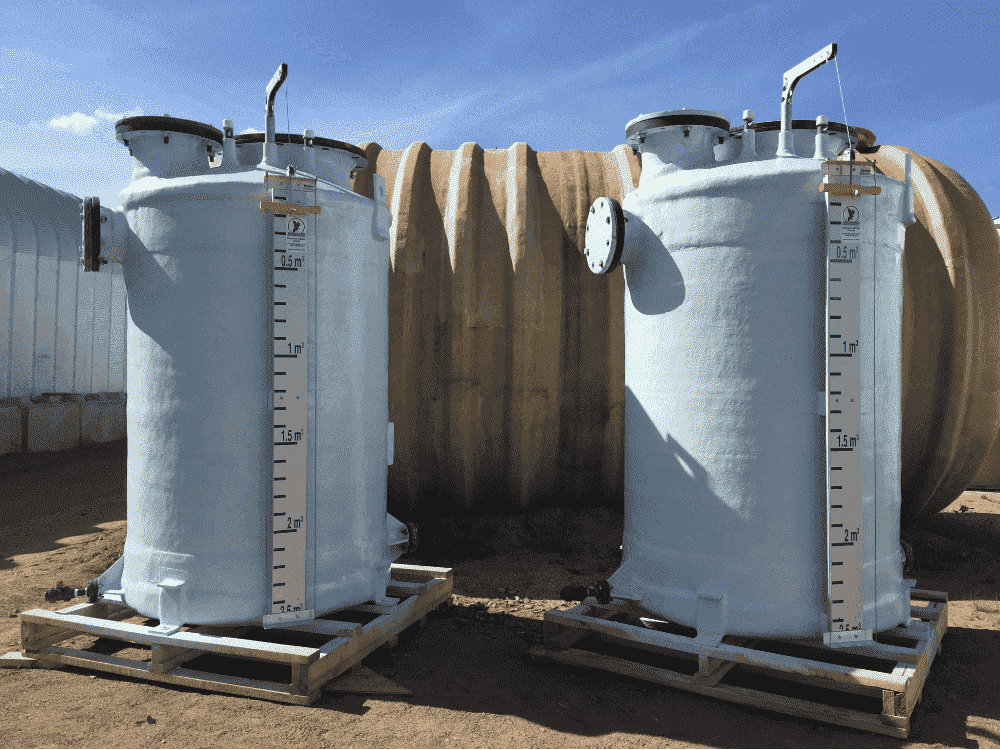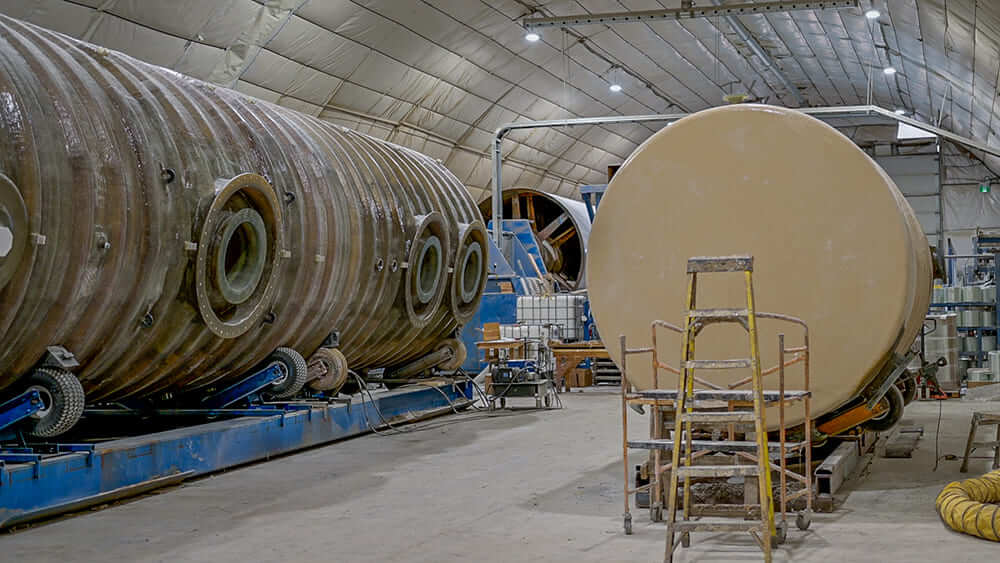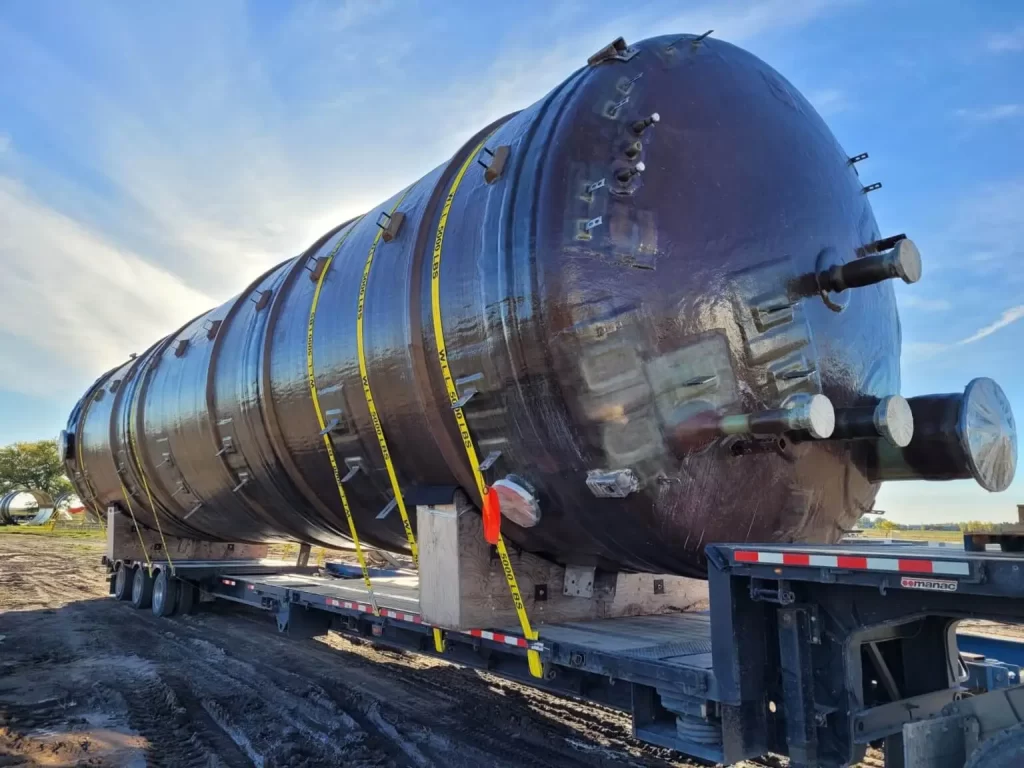If you work on a site with high heat ranges and corrosive materials, you want to know that the equipment you’re using is up for the job. On that same note, if you’re working in the cold of our Canadian winters, you want to know that the fiberglass products won’t become brittle over time and will stand up to the chill. Here’s what you need to know about fiberglass reinforced plastic tanks and how our products will stand up to the varied temperatures you’re working under!
Can You Take the Heat?
Fiber reinforced plastics are excellent heat insulators as the thermal conductivity of polymers is quite low, meaning they can withstand higher temperatures than other building materials, like metal or concrete. Rigorous studies of polymers have shown they can face extremely high operating temperatures when constructed with novolac-based epoxy vinyl ester resins. So if you’re working with upstream oilfield, fire suppression or acid storage, you can rely on the strength and versatility of an FRP Mocoat tank to contain your worksite materials without the threat of melting or corrosion.
Stand Up to the Chill
Did you know FRP Mocoat equipment has been used as far north as the north slope of Alaska? Our FRP structures stand up to temperatures that routinely hover at -30 degrees celsius and below. The structural components of fiber reinforced plastics offer great endurance in severe environments and their built-in resistance to temperature and corrosion allows FRP Mocoat products to be used in extremely cold weather marine climates. However cold the weather is, our tanks will be able to withstand it!
Whether you’re working with highly corrosive materials or your worksite is located in a brutally cold environment, FRP Mocoat tanks will endure. We’ve got the right tank for you, either right off the lot or a specially designed tank that’s unique to your jobsite needs. Let us know what your next project is, we’re here to help!

